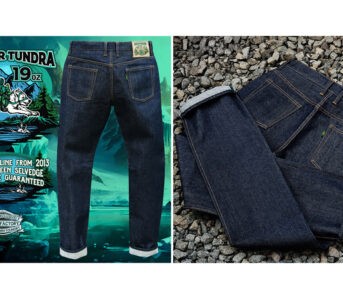
TALEX was founded in Tajima, Osaka, Japan — the capital of Japanese lens manufacturing — in 1938. As is custom in Japan, highly specialized industries are relatively geographically confined to specific areas, where the infrastructure, materials, and technical know-how are most highly concentrated. To this day, the company remains a family business, with the current owner and CEO, Shinzo Tamura, represents the fourth generation of leadership.
Unlike many other optics-oriented companies that view lenses as part of a more diversified portfolio (camera lenses, microscopic lenses, etc.), TALEX has exclusively focused on polarized sunglasses lenses since 1966. It is also one of the few vertically integrated sunglass lens manufacturer in the world.
With the rise of direct-to-consumer glasses brands, like Warby Parker, many companies are putting their research & development funds into developing fashionable frames, and sourcing cheaper, lower-quality lenses in order to deliver suitable margins. This has lead to aspects of lens production being outsourced and disaggregated, carried out by various subcontractors.
However, the benefits of vertically-integrated lens production are well documented. The multinational US manufacturer, Dow Corning, even penned a white paper extolling the benefits of vertical integration of optical systems.
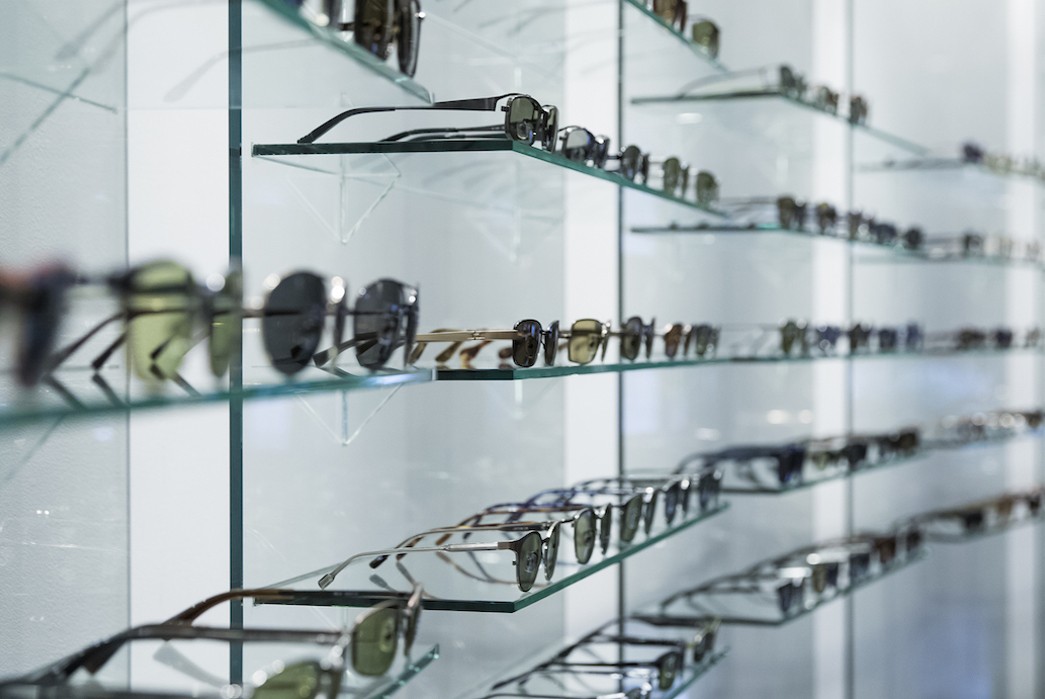
In addition to being a strong point of differentiation, the company’s focus on the sunglass lens has enabled the company to perennially push the industry forward, embodying the Japanese concept of kaizen, or continuous improvement. The company has, accordingly, been recognized for a variety of technical innovations.
Perhaps most notably, the company was the first to develop and patent what they call True View lenses, sold as “Natural Color” on the company’s website, which have been shown to filter harmful rays and reduce eye strain and while evenly lowering the brilliance of each color, such that the relationships between the different colors of the spectrum is wholly preserved. The net result is that, while everything appears darker due to the compounded effects of both light filtration and polarization, you’re seeing colors through the polarized lens in the same relationship as you would if you were looking at them with your naked eye.
Major Milestones of TALEX Innovative Developments
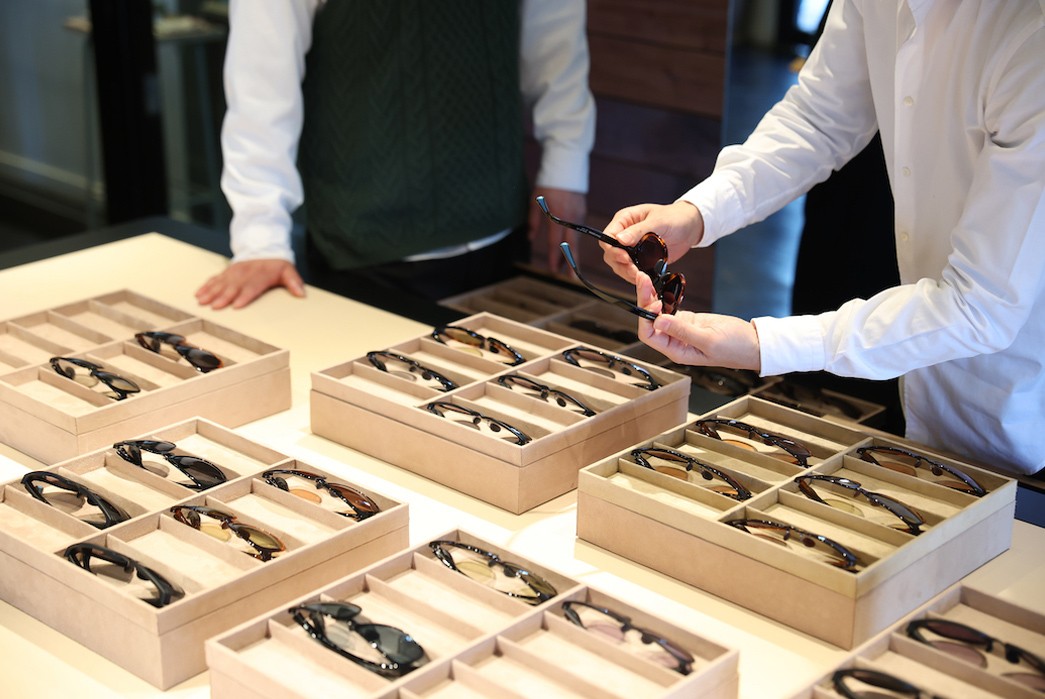
As a brand with more than eighty-five years in the glasses industry, the company has made some pretty significant contributions to the field of optics. Although the company was founded in 1938, the brand didn’t get into the sunglasses business until eight years later, in 1946; TALEX developed its first pair of polarized sunglasses in 1960, giving birth to the brand in its modern form, after which polarized lenses became the company’s exclusive purview.
Following the shift, the company quickly achieved a series of firsts. It developed the world’s first pair of polarized spherical lenses made of glass, quickly followed by the first pair of polarized spherical lenses made of plastic. Based on those and other achievements, the company received the prestigious Soko Kyokujitsu Award for Achievement before being granted an exclusive contract for the 1984 Los Angeles Olympic Games, where it supplied top athletes from across the world with specialized sunglasses to aid in their competitive performance.
The 1990s the company pulled the industry forward with the creation of the first pair of polarized lenses able to reduce UV 400 rays by over 99%, now the gold standard among polarized lenses. Just six years later, the company developed it’s proprietary True View lenses, which preserve true, real-world relational color. As far as I know, TALEX is the only sunglass company in the world that can boast this particular feat.

It would be easy for any company, at this stage of its history, to rest on its laurels. But one of the things I find most admirable about TALEX is its continued commitment to submitting their lenses to peer-reviewed studies to both validate and test their efficacy in the field.
For instance, in 2009, the company collaborated with researchers at Osaka City University Graduate School of Medicine to see whether or not the companies polarized lenses had an effect on reducing the effects of prolonged eye-fatigue among Japanese bus drivers. The study found that TALEX lenses reduced eye-strain related headaches and migraines by over 20%.
To strike a note of contrast with the rest of the industry, the Japanese government commissioned a study on the association between price and quality on three core attributes of sunglass lenses and found little to no correlation between an increase in price and increased performance across a range of well-known commercial sunglasses brands.
Basic Anatomy of TALEX Lenses
In order to prepare for our factory tour, allow me to provide a brief overview of the basic anatomy of a pair of TALEX lenses. Though somewhat technical, these terms will be useful in understanding what goes in to producing a high-quality pair of polarized lenses and appreciating the high level of care the company puts into crafting its lenses.
Light Purification
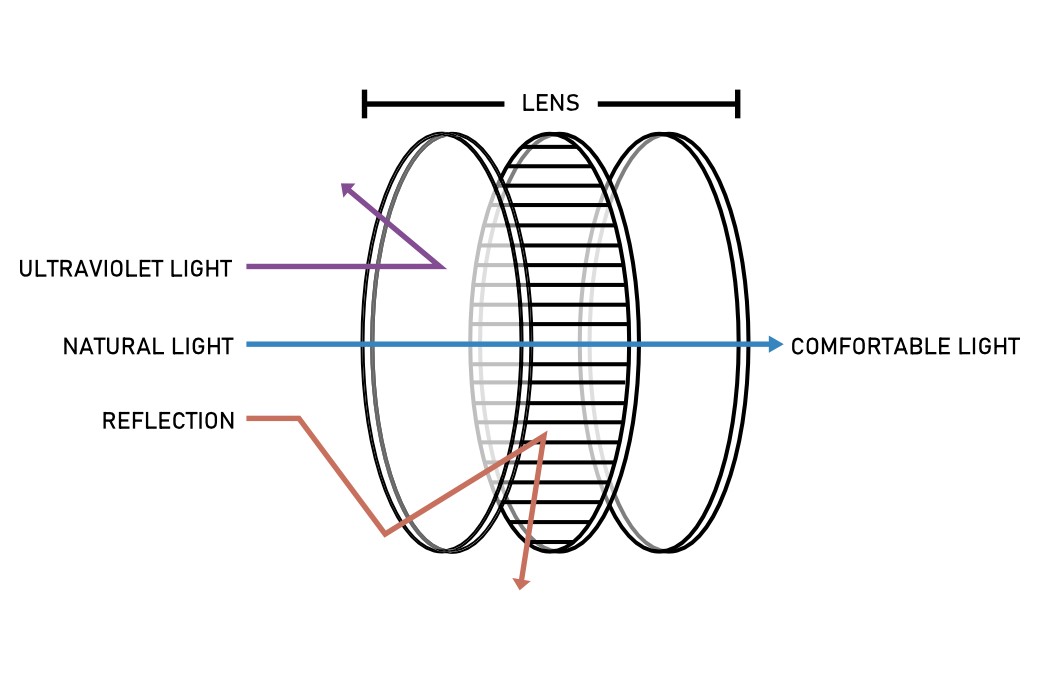
TALEX’s proprietary polarized light purifying filter.
As I previously mentioned, the company’s biggest contribution to the advancement of polarized lens technology is its proprietary Light Purifying Filter, which the forms the basis of all TALEX lenses.
The Light Purifying Filter is a thin film made from a specific blend of iodine compounds that can be selectively calibrated based on the degree of visual balance required (See Visual Balance, below). Two lenses block UV rays, and a built-in filter eliminates glare and other harmful light so you can see better in a variety of wide variety of situations, while protecting your eyes.
Visual Balance
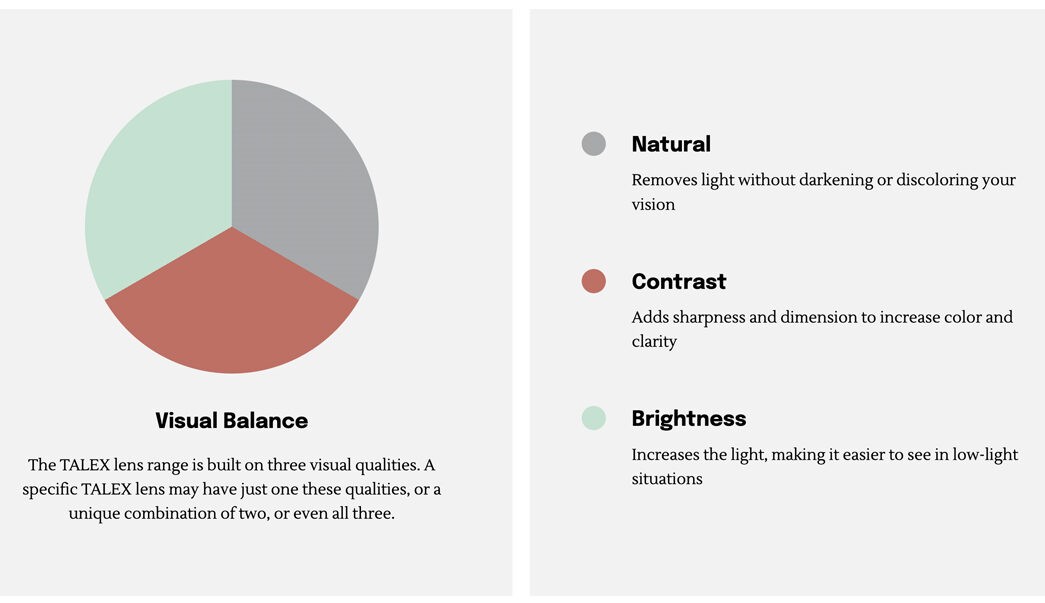
Each of TALEX’s lenses are graded on the degree of visual balance between three desirable effects: natural light filtering, high contrast, and increased brightness.
Every pair of TALEX lenses must balance three competing, but equally desirable attributes: Natural Light Filtering, Selective Color Contrast, and Increased Brightness. Each of the company’s lenses are graded on the proportional balance of these three factors. A specific pair of TALEX lens may have just one these qualities, a unique combination of two, or a blend of all three.
- Natural Filtering: Removes harmful light without significant darkening or discoloring of one’s vision.
- Selective Color Contrast: Adds sharpness and dimension to select spectral hues in order to boost contrast and support greater three-dimensional visibility in specific situations (e.g. snow) and applications (e.g. high-speed driving).
- Increased Brightness: Increased light porosity, filtering harmful rays while brightening the appearance of the surrounding environment. This is ideal in low-light environments or situations that require enhanced visibility.
Lens Curvature
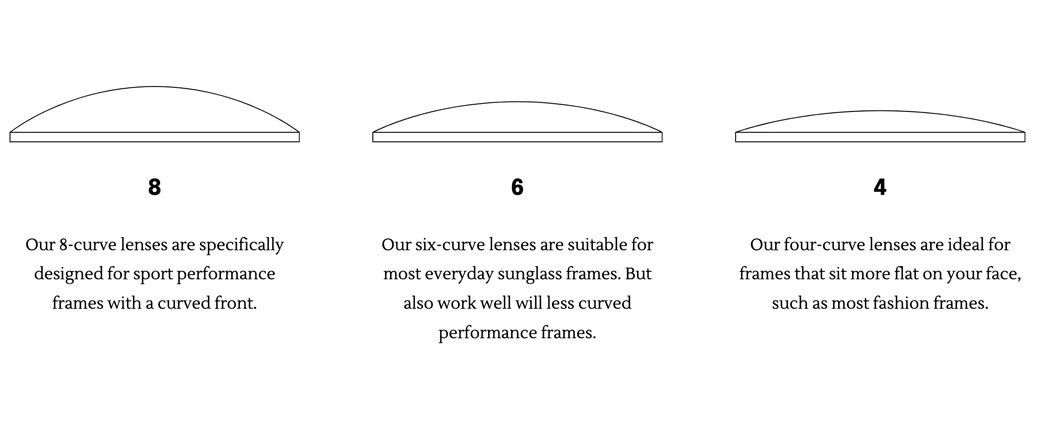
TALEX Lenses come in three base curvatures: base 8, base 6, base 4.
Lens curvature — also known as base curve radius (BCR) or radius of curvature — refers to the degree of convexity of lenses, or how bowl-like they are. The number associated with lens curvature is referred to as the “base,” and relates to the radius associated with the standard curvature of the lens, also known as wraparound effect.
This gets into some pretty high-level optics theory, which I will do my best to spare you. Attempting an oversimplified one-line summary, the radius of curvature affects the both the range of visibility and the direction of light when it passes through a convex surface in relation to one’s eyes. If you want to really get into the weeds on this, I encourage you to check out this in-depth article on 20/20 Magazine.
All that said, the base of the frame is a crucial component of glasses; some would go as far as to say it is the single most important factor in a pair of glasses’ visual performance.
- Base 8 – the roundest of TALEX’s lenses, base 8 lenses are ideal for sport performance frames by virtue of providing superior peripheral vision.
- Base 6 – a middle ground between the base 8 and base 4, this curvature recommended by most opticians.
- Base 4 – the flattest of TALEX’s lenses, base 4 lenses sit flat on the face, and are more suitable for fashion-oriented frames.
Lens Coating
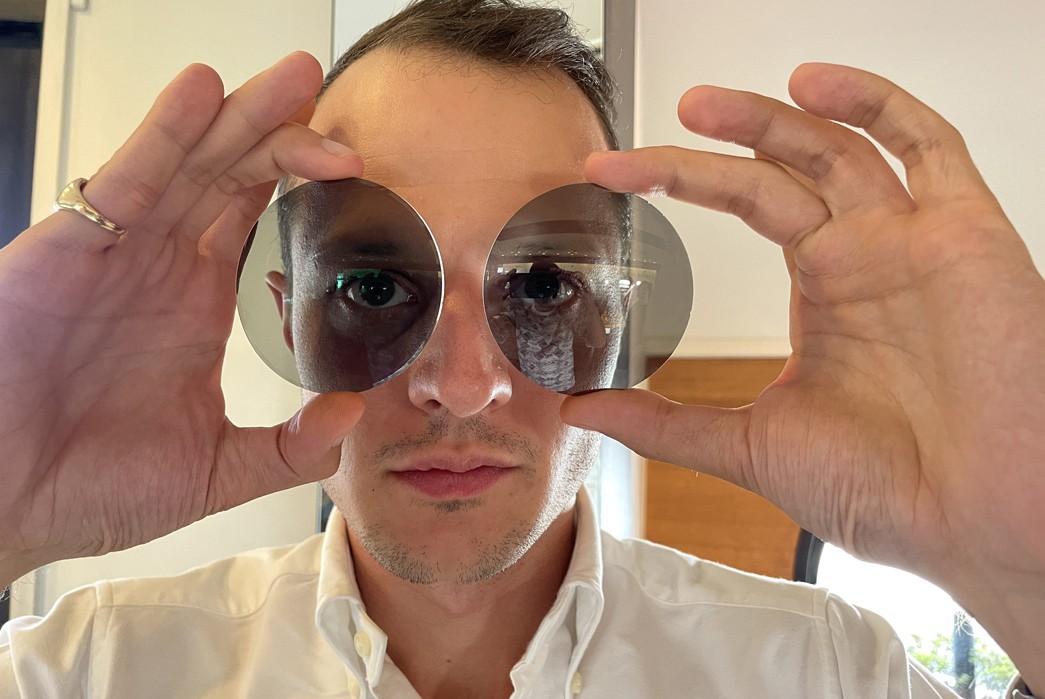
Yours truly demonstrating the extreme ends of TALEX’s lens coating spectrum. On the left, you have a single-layer coating, which is comparatively opaque; on the right, you have the mirror coating, which is highly reflective.
TALEX’s polarized lenses in Shinzo Tamura sunglasses have a protective scratch-resistant coating on both sides, plus a multilayer anti-glare coating on the back side. However, the company offers three different coating options on the front side that result in different net effects.
- Single-Layer Coating: Decreases visible light transmittance by 2%, strengthens the lens surface, and adds water repellant qualities. The single-layer coating also makes it difficult for someone to see your eyes through the lenses.
- Multi-Layer Coating: Decreases visible light transmittance by 4%.
- Mirror Coating: Decreases visible light transmittance by 5%. The addition of a blue or silver vacuum deposit results in increased scratch protection and resistance, and results in a highly reflective surface.
Lens Material
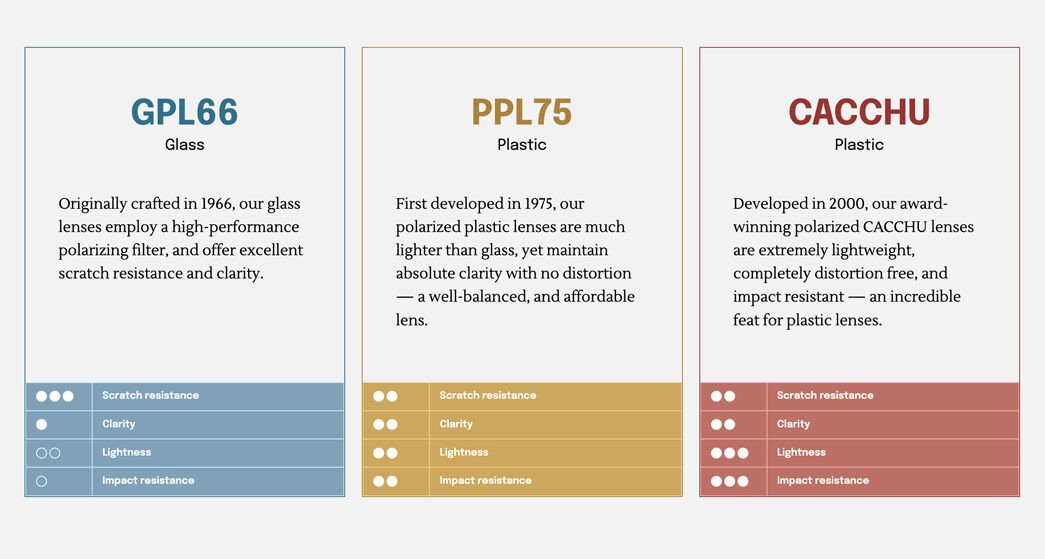
Over the course of the company’s 85 year history, the brand has continuously optimized its lens materials, but currently offers a tightly curated selection of lenses from three different materials, one made from glass and two made from plastic.
- GPL66 – These are based on the company’s first polarized glass lenses as originally developed in 1966. These lenses provide excellent scratch resistance and clarity at the expense of lightness and impact resistance. Glasses lenses have proven particularly popular in the American market, probably a function of our nostalgia for 1960s style icons like Sidney Poitier.
- PPL75 – Based on the company’s first plastic lenses as developed in 1975. These provide improved clarity, lightness, and impact resistance when compared to the company’s glass lenses, although they are slightly less scratch resistant.
- CACCHU – An improved plastic lens, offering ultra high-impact resistance and no distortion.
Framing Setting
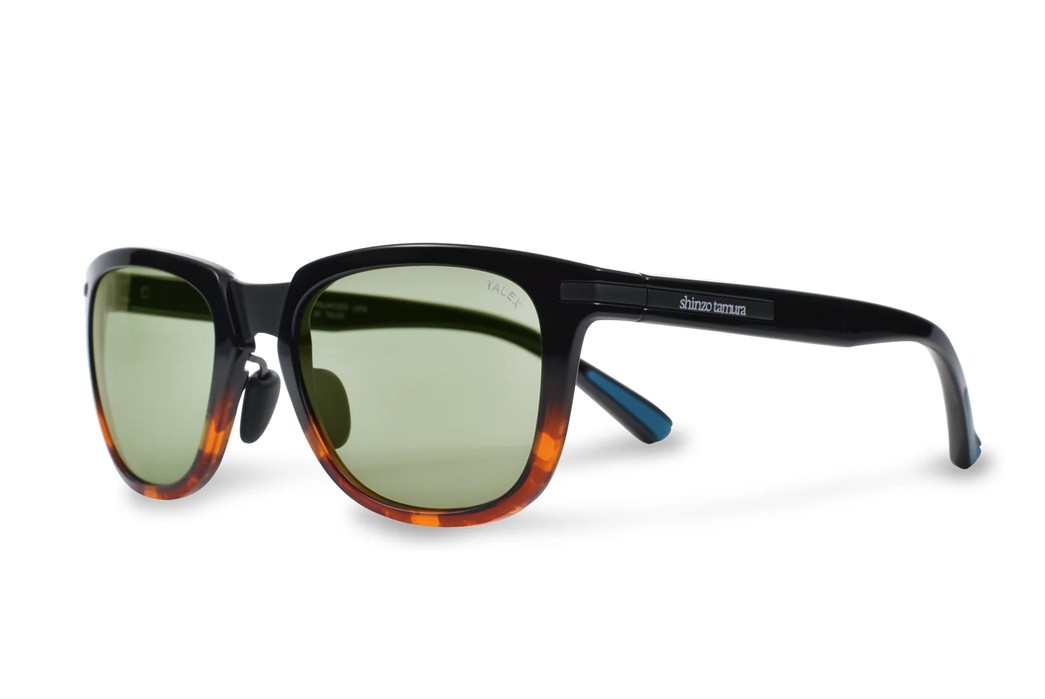
Shinzo Tamura Joto Peridot polarized sunglasses.
Even a perfectly crafted pair of lenses will experience a degree of distortion and undue strain if not properly set within the frame. TALEX works closely with its clients to assure that all of its lenses are properly set, but without end-to-end control of the frame production process, TALEX must accept a slight tolerance for less than perfect frame-lens fitting.
As a result, and in order to provide the best experience possible, TALEX began developing its own frames in the 2000s that have been specifically calibrated and designed to support TALEX lenses.
Taken together, these glasses represent what the company feels to be the best experience of its lenses possible. Sold under the brand name Shinzo Tamura, these frames come in a wide variety of styles suitable to a broad base of applications, from slopes to shores.
End-to-End Production Process & Factory Tour
Having laid the groundwork, let’s take a look at what goes into making a pair of TALEX lenses. Not surprisingly, a lot of skilled craftsman. At nearly every stage of production, the company retains several key job roles that it believes cannot currently be carried out by machinery without significantly sacrificing quality. Across its two facilities, TALEX employs approximately 100 highly specialized artisans who are allocated across each of the different phases of production, listed below.
1. Iodine Film/Filter Production
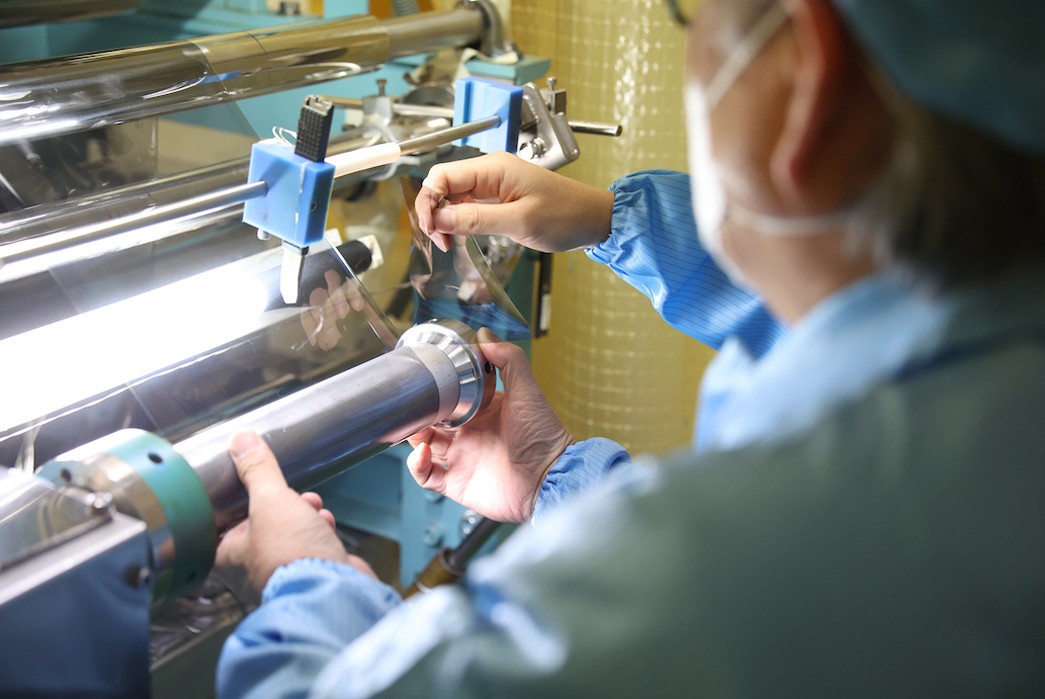
TALEX begins by making rolls of polarized filters using a proprietary iodine solution, which is part of the secret sauce behind the company’s incredibly effective levels of UVA/UVB filtration, which, as you might remember, is over 99%.
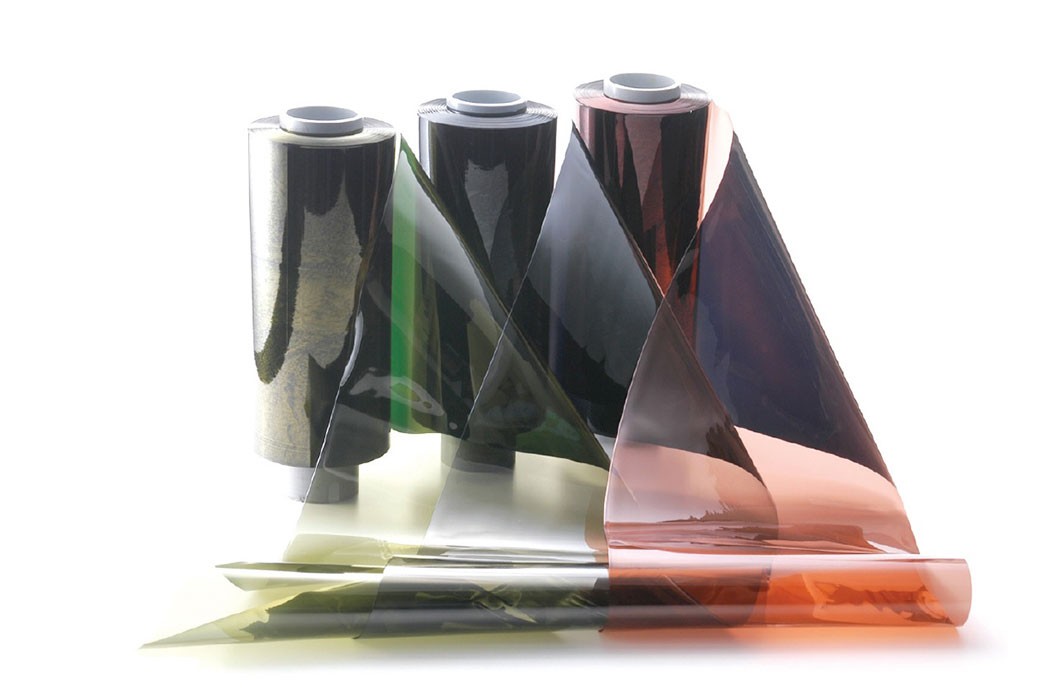
Every one of the machines that is responsible for this initial stage in the process has been developed by the company over the course of its 85-year history. These are not commercial machines that can be purchased on the open market. Instead, the company has either commissioned or developed customized machines to suit their needs and specifications.
2. Cutting of Iodine Film
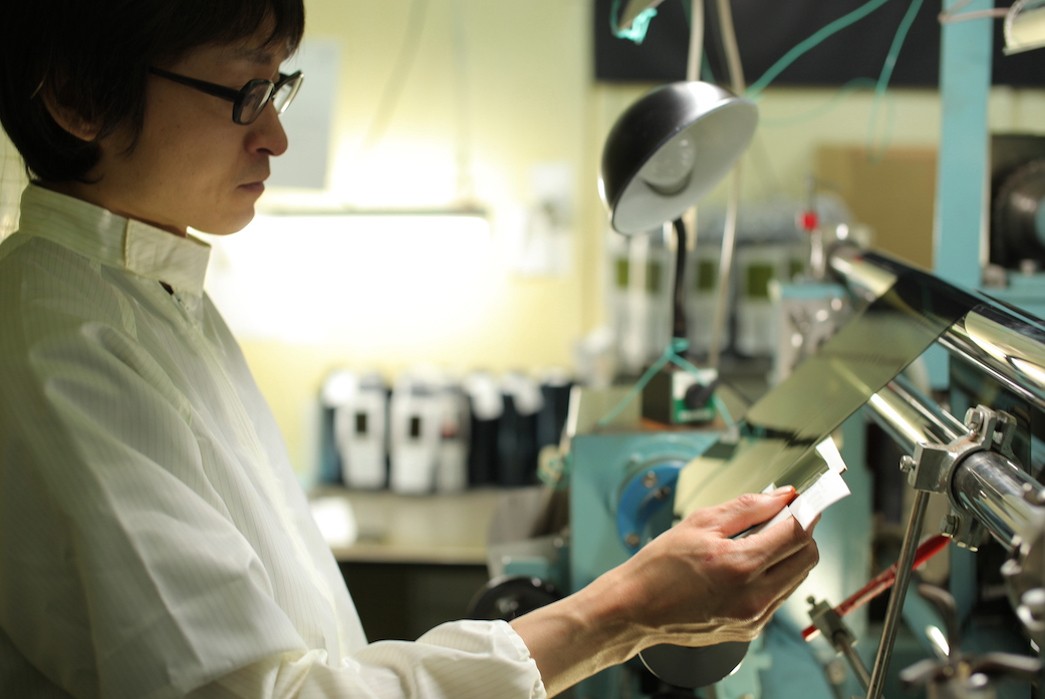
Once a roll of iodized film has been created, it is cut into two smaller rolls which are then subdivided into even squares. Each square represents a base unit of the company’s polarized lenses.
Every one of the squares coming of the production line is individually checked and inspected, in part using the same polarization test we described in the previous article. This level of quality of control far exceeds the industry standard, which ranges from 1/1000 to 1/5000.
3. Production of Glass or Acrylic Lenses
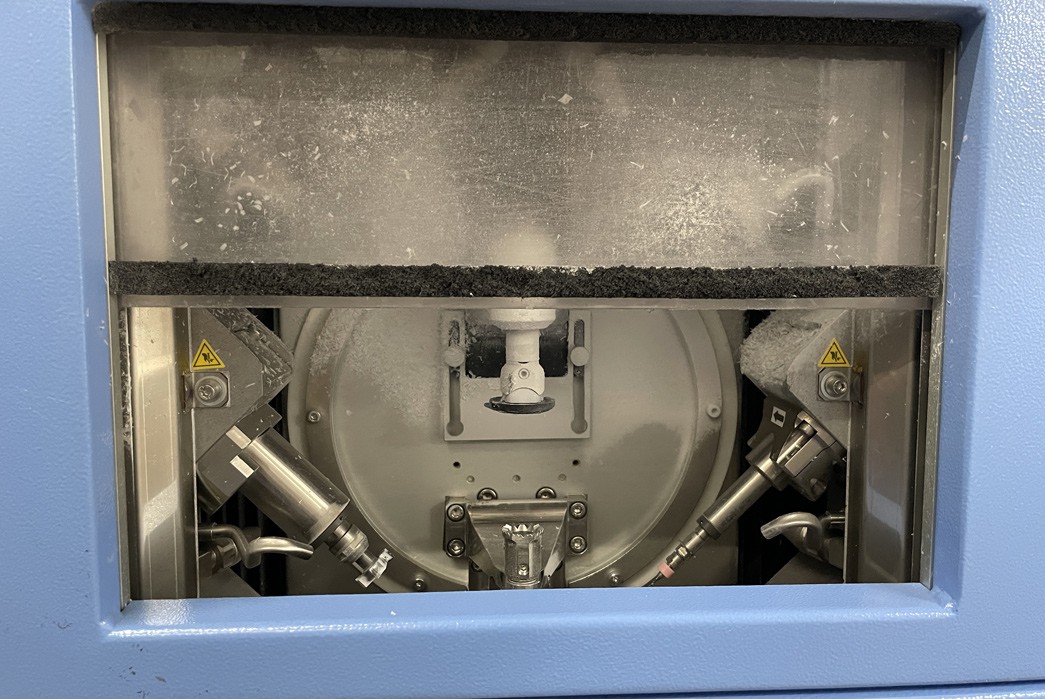
At a separate facility, the company uses high-tolerance CNC-automated machinery to cut the various lenses profiles out of both glass and plastic. This is known as surfacing and is performed by some of the most expensive machines the company owns; TALEX employees must monitor the machines’ performance to make sure that the machines are properly calibrated to produce exacting within fractions of a millimeter.
4. Molding & Sandwiching of Film
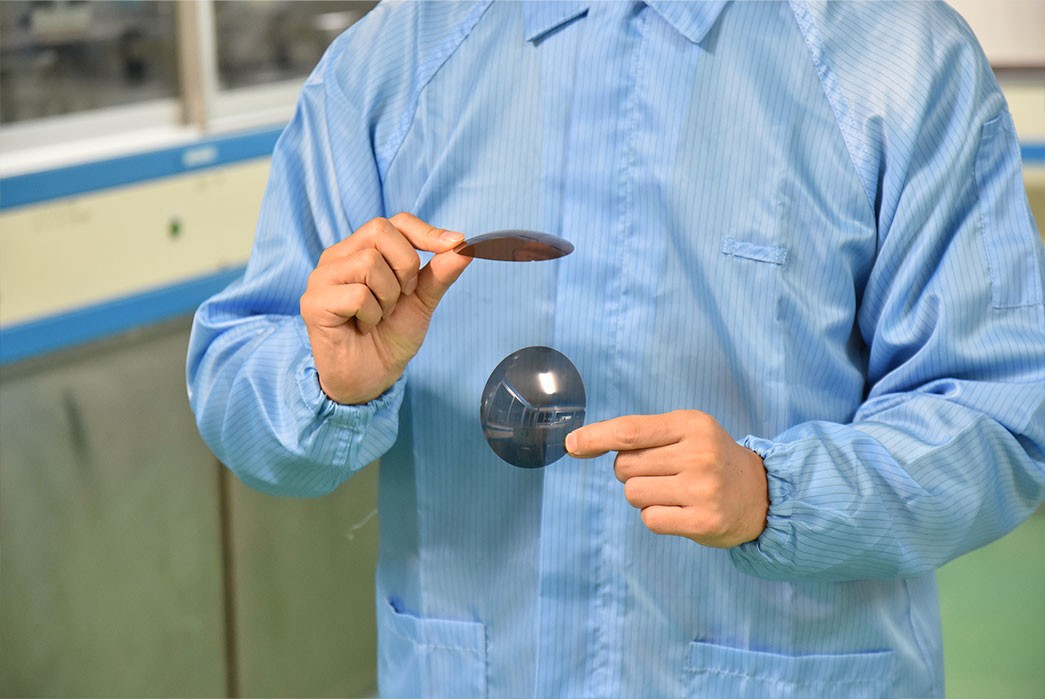
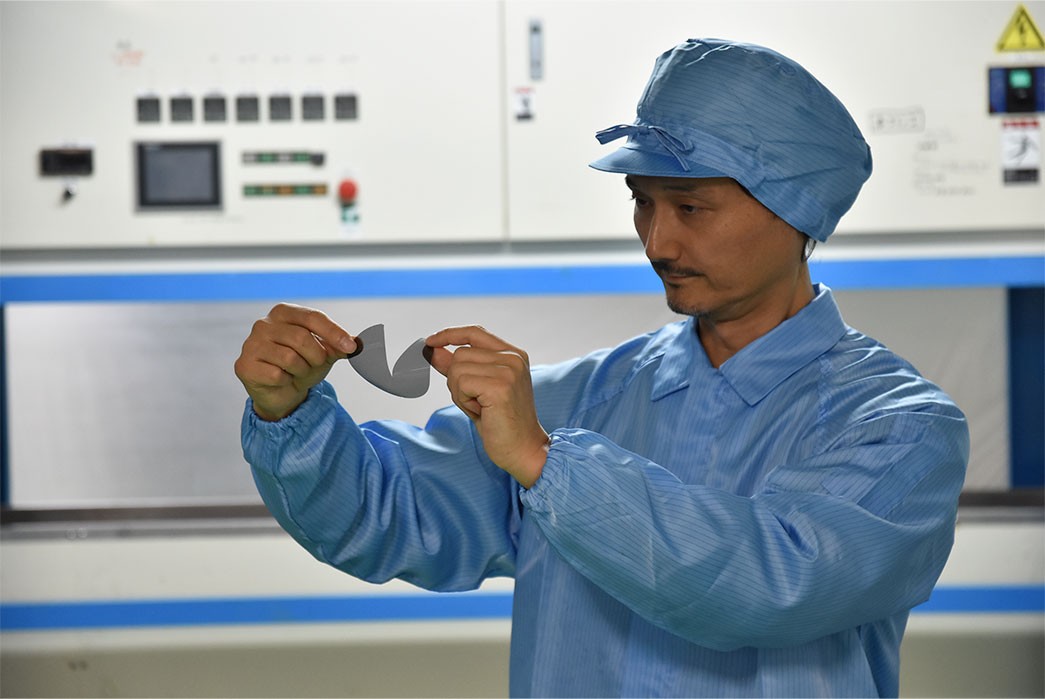
There is a directional orientation to these film domes, resulting in differing levels of tensile strength. Above, you can see the company’s chairman, Hiroo Tamura, demonstrating the brittleness along the horizontal axis compared to the strong durability of the vertical access. This is partly due to the stretching of the film in order to make the dome shape.
The company employs a poke-yoke technique to make sure that the correct orientation is preserved before fusing the film between split lenses.
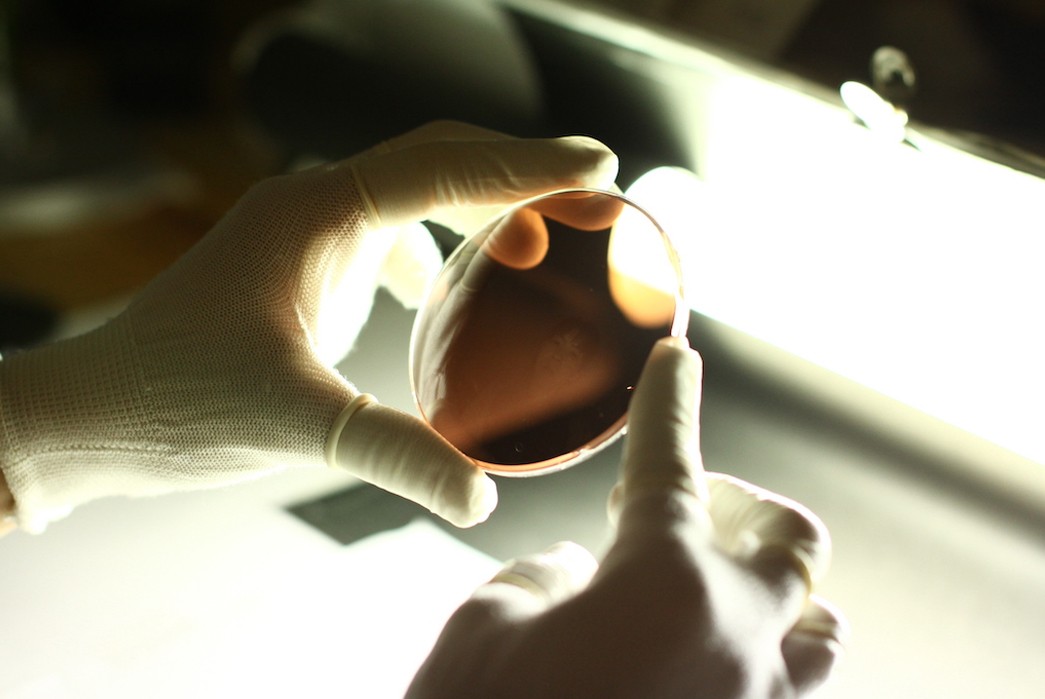
They have to be extra careful to ensure that no dust or stray fragments get between the lens and the film. When we entered the factory, we wore dust-proof coveralls and were hosed off with pressurized air to ensure that we didn’t bring any dust into the facility.
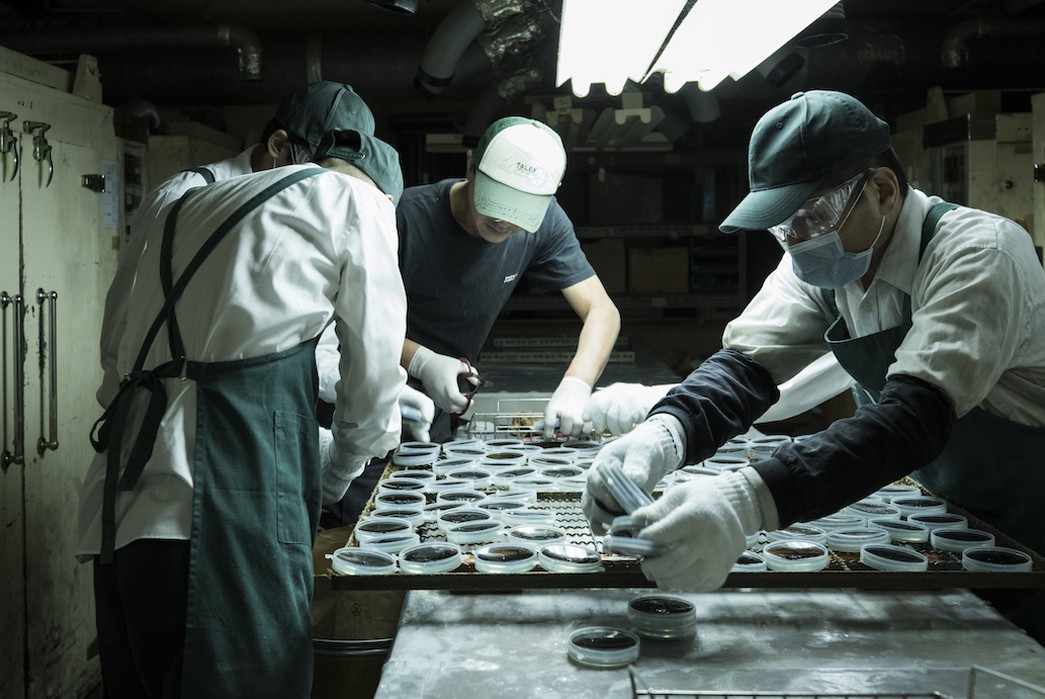
5. Baking of the Assembled Lens

Racks of assembled lenses are then baked in an oven for 1-2 days, before being disassembled, inspected, cleaned and polished. Baskets of baked lenses sit in carefully organized racks to be shuttled between phases of production.
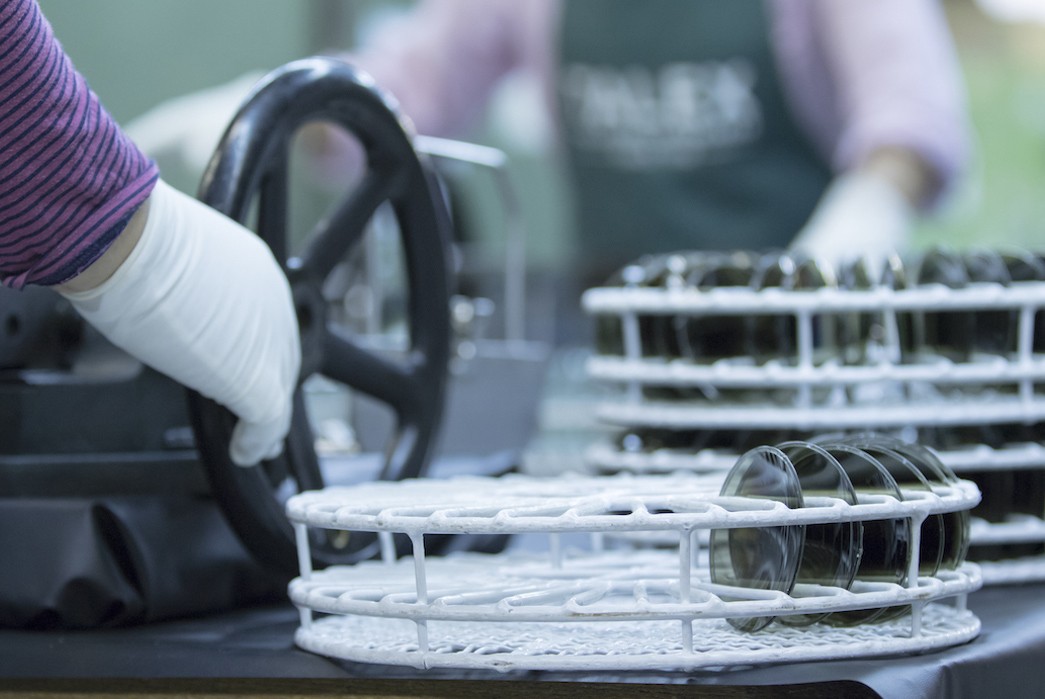
By way of explanation, one of TALEX’s quality control managers offered, “It’s almost like working with a living being. It’s different everyday because the materials we work with are effected by the environment.”
6. Pairing of Lenses

Each lens is then individually inspected and paired with an appropriate match. Highly skilled workers, who have developed an incredibly keen eye for subtle differences that may exist between lenses, execute this stage with a precision that is truly mesmerizing to watch. If you’ve ever observed hanafunda, the traditional Japanese card-based gambling game, you’ll be familiar with the sounds of this stage or production.
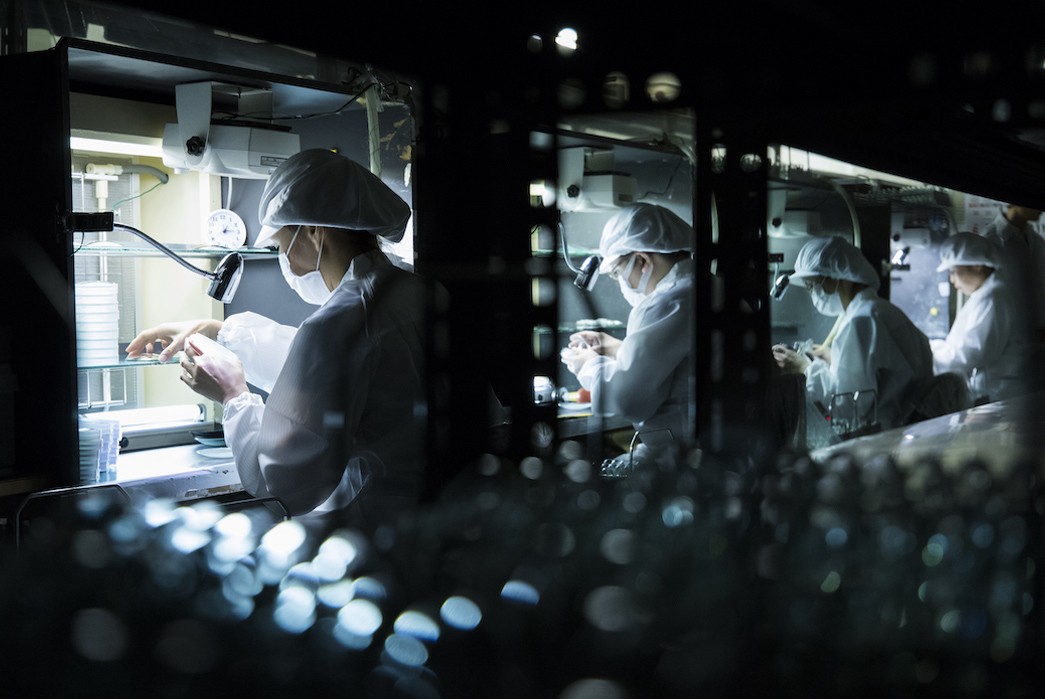
On the day we went, there had been no rejected lenses. We asked one of the TALEX employees how often they have to reject a baked lens, and she replied maybe one every 3-4 days, a testament to the company’s strict quality control procedures. On average, each of these workers will pair about 400 sets of lenses per day.
7. Frame Setting
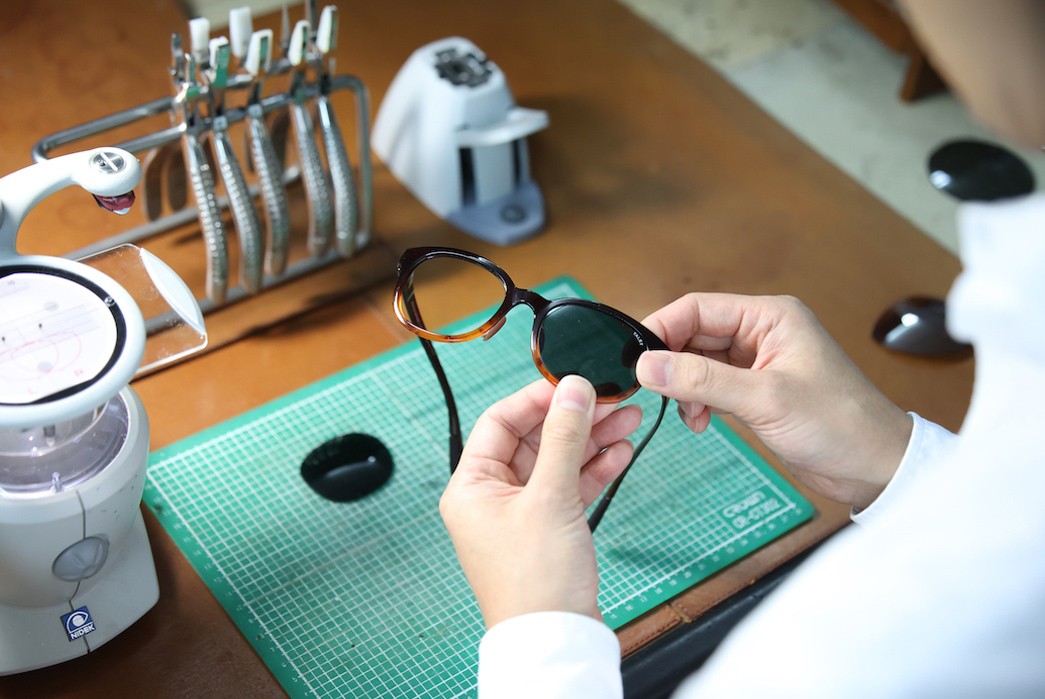
Conclusion
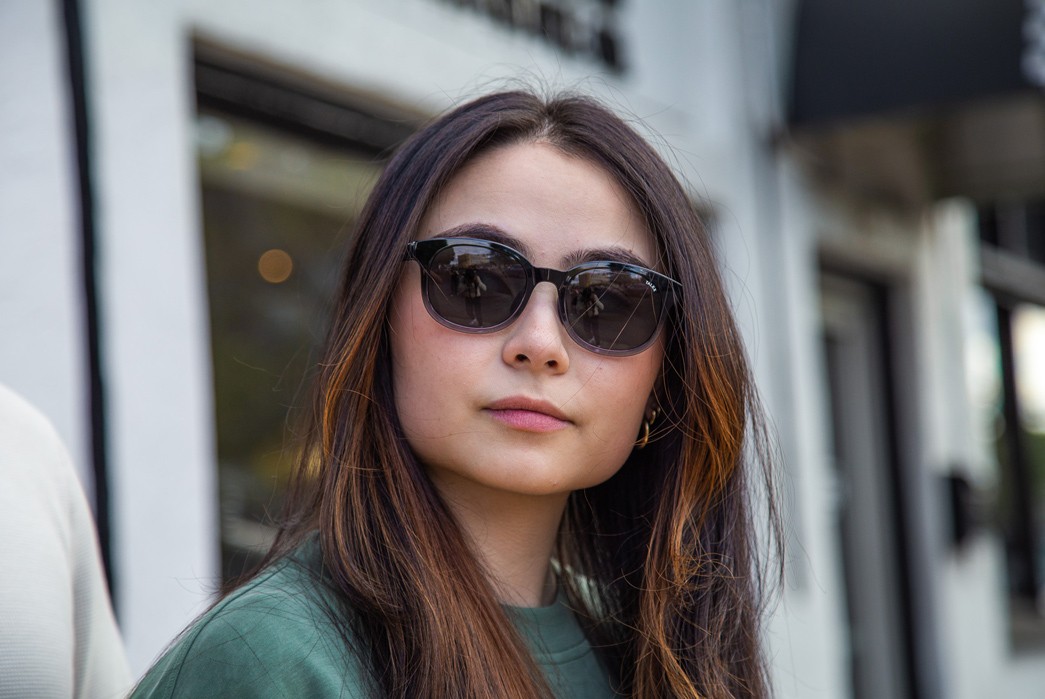
Tennoji Slate sunglasses available for $210 ($189 with Heddels+) at Shinzo Tamura.
We hope the next time you consider a new pair of sunglasses, you also consider the lenses that make them work and the immense skill and craft it takes to produce a pair like those you see above.
If you’d like to try a pair of TALEX lenses for yourself, have a look at their perfectly paired frames at Shinzo Tamura.


